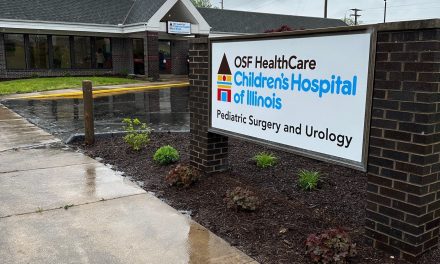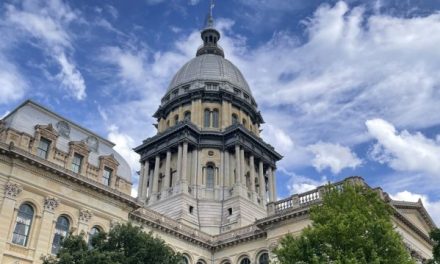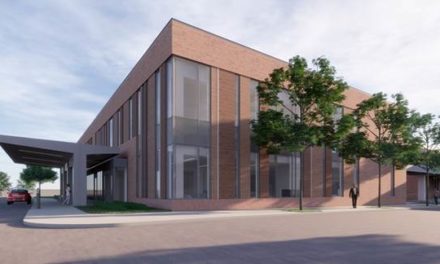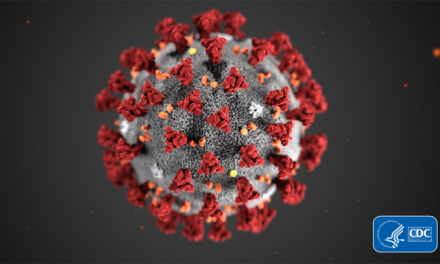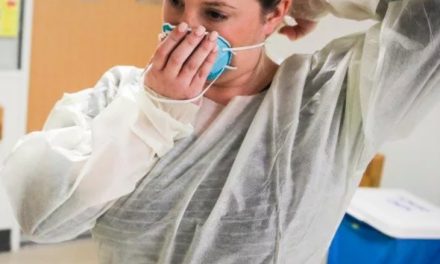
Panelists talk future of hospital transformation in Illinois
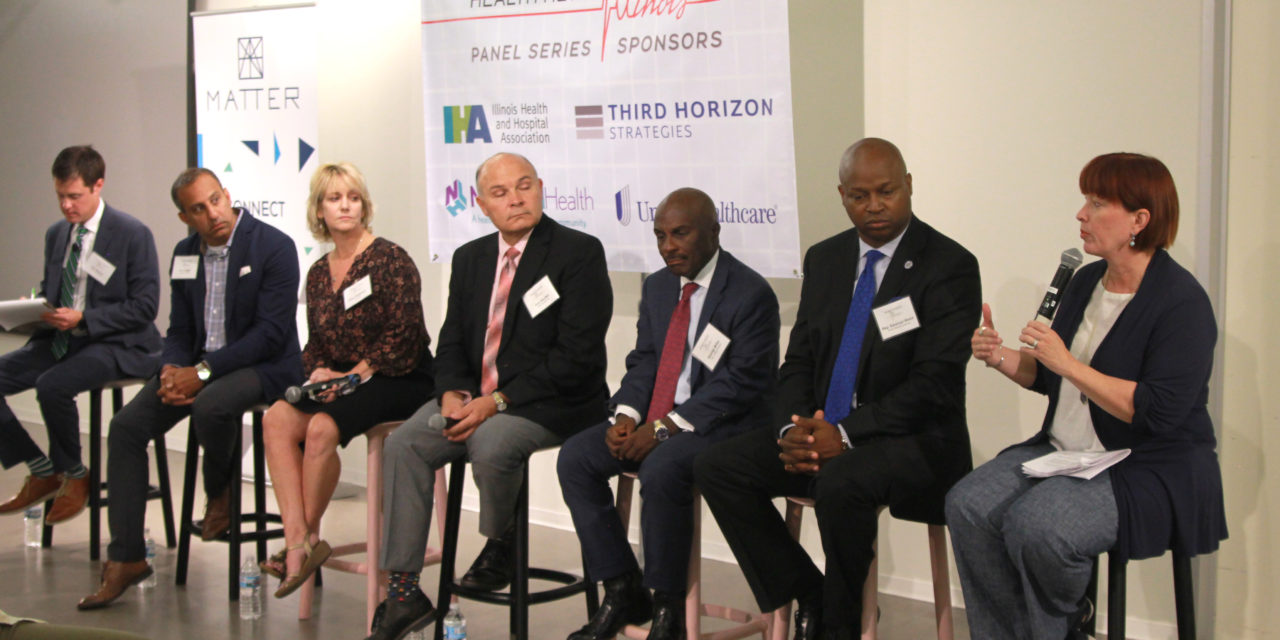
Panelists discussed the state of hospital transformation at a panel this week convened by Health News Illinois in Chicago.
Speakers included:
- Ken Beutke, President, OSF HealthCare Saint Elizabeth Medical Center
- Kara Friedman, Polsinelli
- George Miller, CEO, Loretto Hospital
- Anu Singh, Managing Director, Kaufman Hall
- Sen. Heather Steans, D-Chicago
- Rep. Emanuel “Chris” Welch, D-Hillside
Edited excerpts from the panel are below.
HNI: How does this hospital transformation process compare to those in the past?
Anu Singh: From our record keeping, you’re looking at four straight years now of nearly 100 hospital or health system transactions per year. That number has never been hit in the history of our record keeping. The closest we’ve got was around 1990, 1991 and 1992, in that era. Around the Balanced Budget Act too, we saw a year at the high 90s and maybe a year or two around 100. The pattern back then was health systems that looked at growth to acquire physician practices as well as hospitals in a way to become a more equal participant in the negotiations with managed care companies. Essentially that is where we were back in the 90s. It was an archaic model, an arms race around resources that were providing care and then the insurers were financial care.
What we’re finding today is really two markedly different things. One is organizations that are willing to take on population health management. Health systems now have invested in informatics, clinical and business development systems that they believe they can look at physician operating data and say, ‘You know what, we can create some new efficiencies ourselves. We’re not beholden to one resource.’ And I think that creates a lot of opportunities for collaborations between payers and providers. If there’s something that I would predict going forward, it’s that we’ve seen a lot of provider consolidation, we’ve seen some payer consolidation, and I think we’re going to see a lot of payer-provider partnerships going forward in the form of joint ventures and other collaborations and structures that could benefit both organizations.
Secondly, the makeup of the hospital and health system transactions themselves is very different from the 90s, and even the early 2000s. If you look at the net revenue base, on average, of the transactions that took place in, say, 2005 and 2006, a smaller organization entering into a health system or a hospital partnership was about $130 million in net patient revenue. That screams of a community hospital or a rural organization that for whatever reason ran out of resources, couldn’t finance its growth plan and looked for a partner. Last year, the average net rate revenue was $450 million in net patient revenue. Over the last four years, 55 organizations, hospitals or health systems, have elected to be the smaller participant in an M&A partnership or transaction when they had an A- credit rating. What does that mean? That means the rating agencies have defined these 55 organizations as basically a negligible amount of risk for default. They are very strong organizations. High profitability, high cash reserves, leaders in their market, and yet they’re electing to be the smaller participant in an M&A transaction. What that means is they’re shifting from financial scarcity of resources to strategic initiatives. They want to get smarter about clinical and business intelligence, they want to create new models of care, but they need that higher base of resource, the higher base of intellectual capital, and a higher access to research and development to create those new care models. So that’s what we’ve seen that is a very different story.
HNI: What do you think is driving these hospitals to consider different delivery models?
Kara Friedman: It really depends on the market. We’ve seen in Illinois that the Illinois Department of Public Health is very concerned about how pediatric services are going to be delivered. In the Chicago metro area, the average daily census of community hospitals and pediatric patients could be two to four patients per day. So you’re seeing a lot of those hospital programs close, and that concerns people. But what you have to compare that up with is the fact that we have several tertiary care and children’s hospitals like Comer, Hope and Lurie’s and we have big programs in Milwaukee as well as St. Louis. Sometimes the services are just evolving and we need to recognize that the system sometimes does what’s right in order to rightsize care. So that’s an area where, pediatric inpatient care, it’s an area where I think they’re getting more efficient in what they’re doing.
HNI: Starting next year, the hospital assessment program will direct more than $260 million towards hospital transformation. How will that money be allocated?
Sen. Heather Steans: So there is about $263 million that was set aside and, as noted, it is a very small piece of the about $3.5 billion hospital assessment total we spend that just goes toward Medicaid in the state of Illinois. I don’t think it has the ability to totally transform the system at all. I think what’s been happening is the federal government has been putting a lot more pressure on trying to move more of our spending in Medicaid toward live claims, not static payments, and it causes stress within hospital systems, particularly those hospitals that rely tremendously on Medicaid. Yet a lot of times, generally speaking, the trends in healthcare are about a lot fewer visits to hospitals. So if you’re dependent on Medicaid and there are fewer patients coming in, you’re getting a lot less revenue to support that facility. And patients have more choice now. Through the (Affordable Care Act), we have a lot more people getting coverage in Medicaid and they have a lot more choices of where to go. So we’re seeing a shift on where people are getting their care and it makes it a real challenge for those safety-net hospitals who are located where they are. So I think these dollars are intended to try and help some of those safety-net hospitals in particular work regionally. I think you have to look beyond a single hospital and ask what is it that this community overall needs, and to make sure you’re getting that community input based on the social determinants of health, and how that hospital fit into the overall picture. So if we’re looking at it that broadly, I then think those dollars should be aimed at helping that hospital transform in the context of what that community needs.
Rep. Emanuel “Chris” Welch: If we’re going to really see hospital transformation have an impact in the communities like the one I serve and the one that George serves, we’re really going to have to get that hospital assessment piece right. In 2020, that is going to be a critical year for us to try and get that right. If we look at what happened last assessment, I believe that is why hospitals like Westlake closed, and why MetroSouth is on the brink of final closure of its doors. If you look at where the dollars went in the last assessment, the last four or five systems that are the biggest systems in the Chicago area, that are in rich and wealthier areas than us, they did significantly well in the hospital assessment. It was like the haves got more, and the have-nots got less. And I’m ashamed to admit that I voted for that last assessment without fully understanding the impact on hospitals in communities that need more access to care. The assessment piece is critical and we have to get that right in 2020.
George Miller: I’m glad that both of our legislators have made this point. Let me give you the reality of what it means for a safety-net hospital. As was stated, 18 percent of the funds that come to our hospital are following the patient. That sounds like a noble thing to do. Let me give you an example of what the impact would be. If a patient walks into our hospital and has a stroke, we have a wonderful relationship with one of the major hospitals downtown where we’re able to evaluate that patient through telehealth and determine if that patient needs to go to that other hospital for surgery to save that patient’s life. But while that patient is there, our physicians, our ER will take care of the patient. We’re going to get labs, we’re going to get medicines as prescribed in partnership with the other hospital. But what the payment did is it would go to the other hospital, every dollar. We would get paid nothing for the ER visit, the CT, the drugs that we administered, the nursing care that we gave and saving that patient’s life so they could go to the other hospital. And the money will follow the patient. So that’s the impact, we really need to look at peeling the onion back on this new assessment that will start July 1, 2020. We have to come up with a better methodology.
HNI: What kind of models could you see happening in your community?
GM: Well, we’ve already started transforming. We realized that healthcare is going to move from an inpatient model to outpatient. We’ve just created a new infusion therapy for oncology, we have a partnership with UIC so if a patient in our community has cancer, we can give them infusion therapy. We’re talking about going out into homes and doing home care, we’re talking about doing home dialysis instead of at the hospital. We’re talking about doing home healthcare in the community, in the patient’s home so that we can touch patients outside the four walls of the hospital. So we understand that we have to transform. But because of the disparities I’ve talked about regarding healthcare and the lack of funding – we’ve been there for almost 90 years in our community. So that transformation means we still have to keep the heating and air conditioning on, the lights on and the security there for the aging building as we try to transform. So that’s why we’re going to need some help in that transformation. We cannot move our hospital to the suburbs. We have to be there for the community.
HNI: Rep. Welch, you’ve been involved with the situation at Westlake Hospital and its closure. Its owners, Pipeline Health, had said their goal would have been to make it a state-of-the-art outpatient center. Would that be good for the community, rather than a hospital losing money?
EW: Closing a hospital in a community like the one Westlake served is, I think, just detrimental. And all you have to do is call any of the fire departments in that area… and they’ll tell you what a nightmare it is when they have to take patients to these other hospitals that are now being. They’re just overflowing with patients waiting to be served. If you’re having a stroke or a heart attack or a seizure, and you’re just standing in the hallway like everyone else, it’s just awful. So do I agree that you should look at these things and see how you can provide it in a different way, a better way? Yes. Maybe you can reduce the beds, maybe you can reduce certain types of services. But to close a hospital in a community is just devastating. And we have to remember what those community hospitals are all about. Many of these community hospitals, when they opened up, were opened by religious entities. They were there to provide healthcare to the poor and most vulnerable, intentionally. And now we’re getting away from all that because it’s all about money. Unless you have money and health insurance, you’re not going to get the same type of healthcare. We have to get back to the day of what those community hospitals were about and remember they are there for a reason and they serve a purpose. You cannot leave these poor communities without healthcare.
HNI: Ken, the OSF Center for Health-Streator has been highlighted as a transformation success story? How did you overcome initial community concern over transforming a recently closed hospital?
Ken Beutke: It was a very difficult decision for them because they do look at those vulnerable markets. I mean, that’s what Catholic healthcare is about. So it was a very difficult transition, certainly. The community was upset that they were losing their hospital. But yet, we also had to use the information and the data to make the right decision if we wanted to sustain access for this community.
So what does that look like? Again, to Senator Steans’ comments, we had to work with the community to define what they needed. And what they thought they needed and what they really needed did not always match. And so acute care, an acute bed hospital was not needed in this rural market. We were already over-bedded. The other hospital, the hospital that this ambulatory service now falls under at Saint Elizabeth Medical Center in Ottawa, Illinois, is 19 miles away. That was a really big distance for them. Now our 19 miles, I can get there in under 20 minutes, and in an ambulance I can get there even quicker. But it is still a perception that I am going to die from here to there. So there were a lot of those emotions in the community. The approach that we took was to try and make some of those decisions with community leaders and not make them unilaterally. Because we needed them to buy-in and to start to trust us as their healthcare provider because OSF HealthCare surrounds this community. So there is access to those higher levels of care.
HNI: How did you decide what services to keep in Streator?
KB: The first thing they brought up, aside from the acute patient beds, was emergency care. What is going to happen if I’m having a heart attack, if I’m bleeding to death? A lot of emotions were around that topic, so at that time you couldn’t have a free-standing emergency center. So we took that on, we studied it and said, ‘Is this something that is needed?’ So we went through the process to be able to have a free-standing emergency center at this ambulatory facility. So we’re the only one downstate that has this. It’s not something I’d advocate for in every community. For this community, it made sense. And now we’re seeing in that emergency center about 35 to 40 patients per day.
But then what else do we need? Obviously, we need imaging services, some labs. But we only need some levels of that to support those services. And then we wanted to create a healthy village because those health disparities that are out there are real, and we wanted to get good access to primary care. But yet, we also wanted to work with agencies to help us address these social determinants of health. So we took this acute care hospital, six floors, and in our final stages, we’re going to remodel them to make them a place where people view it as a place to come and be healthy and to be well. Not necessarily to come here when I’m only sick and ill. We’ve been very busy working with the health department, with the American Cancer Society, with other behavioral health providers to really create that one-stop-shop access for patients. Because in a rural environment, transportation is a big barrier. So even though we’re only 19 miles away from the other hospital or our other facilities may only be about 23 miles away from them, people still cannot get there if they are coming for other specialty services. So transportation, I think, is something that in transformation we have to keep in consideration. I cannot call an Uber or a Lyft in Ottawa or Streator. That would be a great option, but it’s not available. So we continue to regularly hit those kinds of barriers that I think becomes a problem when we try and transform healthcare. We’re building that healthy village. We will have primary care providers and specialists that come on certain days of the week from our other hospitals. But also we’ll have telehealth groups. Many of our specialists will telehealth in because we cannot put those specialists in the room all the time, it’s not cost-effective. So we’re also going to have a telehealth bar, not a drinking bar, where people can go and really learn how to use their technology, just like when you walk into an Apple store. So we really need to put those things in place that can give the patient competence in many of the things we do in transformation.
KF: As we transform healthcare, a lot of the things that Ken has touched on… we might want to have a Melrose Park free-standing emergency department. We might want to have one down in the south side. But unless you’re connected as a remote location to another hospital, you cannot get reimbursed for a free-standing emergency department. Similar to remote patient monitoring and telehealth. (The Centers for Medicare and Medicaid Services) has not broadly recognized the delivery of medicine through telehealth mechanisms.
AS: What is really important about everything we’ve heard so far is that in recognizing one unique thing about healthcare services delivery in the United States, it is truly a crossroads between public service and commercial operation. It has elements of both and we have to accept that. And one of the things I think is critical is that, when industries start to transform, what we have seen in airlines and in energy, we have seen that a public sector or a government catalyst with commercial solutions has always worked out to a community’s benefit. In the vast majority of instances, we have seen an enterprising, innovating solution to a government-led catalyst as critical. And where I think we’re having a little bit of friction in getting that done in this industry is that we are not yet doing enough to support the alternatives for inpatient care for hospitals and health systems in the market where there is a better business model. So one of the two things we need to do is we need hospital and system leaders to be very honest about what their core business is. What is it that they really do for their communities today. What is it they can do going forward for the community and if there is a way to commercially enterprise around it because the resources out there are great. If not, then they need to – and we’re starting to see this – we need public sector support to allow those organizations to make that pivot and to make that turn. Because the ability of just saying ‘what we did before is what we’ll do in the future’ is just not going to work.
HNI: What more can policymakers do to support transformation?
HS: So is there the ability? Well, there always is the ability. Is there the political leadership and will to do it? Certainly in New York, when they took on hospital transformation there, they had leadership from the governor and their hospital association really leading the charge. We have not had that sort of coming together yet. I think it’s politically fraught with challenges, which can make some hesitant. We’re also a state that has a lot of financial challenges, so trying to take on another financial burden when we already have a lot we’re trying to manage, with our pension and other issues, it’s a challenge. I just think there’s going to be some realities on how we’re going to allocate resources that are not all there. I do agree that to really help with some of these transformations, we do have the $263 million and there is also some additional money in the capital plan that is targeted for hospitals that could also be brought to bear. And that is another $200 million. We probably will not get to everything, but it could perhaps help with some models.
EW: I do think the state needs to play a larger role, because I do think there are two major civil rights issues going on today. That is access to healthcare and access to education. And I think the state should and does want to play a role in making sure communities that are low income and also our most vulnerable have access to both. And to do that, we have to acknowledge that we might have to try and find more revenue somewhere in order to provide the additional money needed in these communities. We cannot have people living to 80 if you can afford to live in one community and those dying at 60 because you had to live in another one. It’s not right, it’s not fair, and to me, it’s an issue that we all have to fight for.
HNI: How important will partnerships be for safety-net hospitals going forward?
GM: We are talking to our colleagues to see if there are ways we can consolidate some of the things that do not identify us, our brand. We can do some back-office things together and try and combine our resources. I’m amused by, but some would agree with this statement, that nobody wants us. Let me take a little bit of issue with that. They don’t want us because 75 percent of our payers are Medicaid, the worst payers. But we’re strategically located. Those 10 people whose lives we save a day, they’ll want us. They want us to be here. So I get a little bit challenged that they do not want us. We provide a valuable service. We save lives every day. And we prevent diseases every day that could go and spread to your children and your neighbors. So we will be talking to our colleagues about consolidating our services, trying to use innovation and technology.
AS: I think that any organization right now realizes that some level of collaboration alignment or coordination of care is going to be critical. Whether that extends to a full partnership or not, it may or may not. But I think organizations that say ‘we don’t want to work with anyone’ are destined for mediocrity, at best. And the last thing I’d say about the safety-net hospitals is, and keep one thing in mind about these guys, and this is the optimism that I have. There is no other segment of healthcare delivery right now that is doing more with less. If we figure out the intellectual capital and how an organization like Sinai or a Loretto can operate at 30 days cash-on-hand and still meet quality standards, we have wisdom in there that the rest of us could learn from. The organization that’s sitting on 520 days of cash-on-hand can turn off their revenue spigot for a year and a half and run on normal operations, and in many instances may not have the battle scars or the scar tissue that these safety-nets have. And if we have a way to unearth that, we’re going to have something very, very important that we can mine and we can really take to the rest of the industry.

